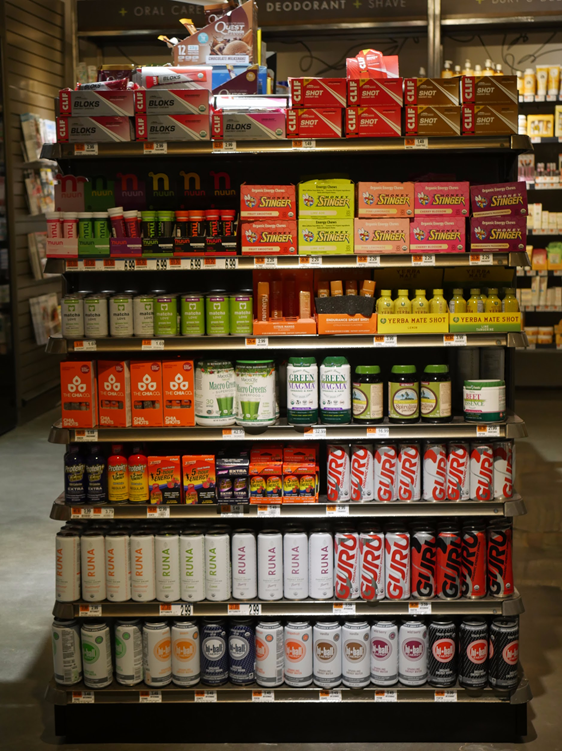What does your products’ shelf presence say about your brand? A lot, actually. The store shelf is often shoppers’ first point of interaction with your products, so how they’re merchandised can make or break the sale.
Today’s consumers gravitate toward brands whose core values align with their own. In fact, they’ll spend up to 46% more on brands they perceive as providing value, supporting the individual consumer, and supporting society as a whole.
Your brand has a few key opportunities to convey its personality to buyers at the shelf level. Using the image below as an example, we’ll dive into how product packaging, shelf placement, and unit price impact consumers’ purchase decisions.
Premium Packaging
Product packaging tells shoppers your product’s story at a quick glance. Size, color, material, and text all play a role in how your product is perceived.
Striking a balance between being on-trend and insightful is key to winning the sale. Trends such as smaller packaging and thoughtful messaging require careful consideration when designing for today’s retail environment.
Let’s see how brands in the photo are embracing these evolving trends:
- Nuun, Clif, 5 Hour Energy, and Honey Stinger all use bold, bright colors in their packaging. These “look at me” hues make sense for brands selling to active consumers doing high-energy activities.
- Runa and Hiball incorporate white into their can designs. A symbol of purity, this color works best for brands selling a natural, good-for-you product.
- Guayaki opts for single-serve containers geared towards the “grab-and-go” consumer, whereas Green Foods sells multi-use jars that attract a different type of buyer.
- The Chia Co. combines single-serve with multi-use in one box, broadening its appeal to shoppers who need a fix now, but want a stash for later.
Strategic Placement
Shelf share and location can give you a leg up over the competition. Sure, more facings make it more likely that a consumer will buy your product, but there are other factors to think about as well.
- Use the metric SOVI (Share of Visual Inventory) to determine your presence in the category as a whole. Count the number of facings across an entire category, then do the same for your brand within that category. Divide your brand’s facings by the total number of facings in the category to get a percent score, which is the SOVI.
- Take note of the height where your products are placed at. Eye-level is the most attractive facing, but think practically too. For example, you don’t want a heavy tub of protein powder on the top shelf making it cumbersome to reach. Likewise, single-serve bottles wouldn’t get grabbed as easily on a bottom shelf.
- The literal measurement of shelf space can indicate category dominance. Notice how Hiball and Clif occupy entire shelves, even if they’re not at the most desirable heights.
- Another consideration is product assortment. More SKUs on the shelf means more ownership over consumers’ purchasing options. Most of the brands in the photo are competing aggressively in this area.
- Differentiating yourself from direct competitors is critical if you’re placed close together. Nuun & Honey Stinger do this by using different packaging styles. Also be aware of your placement next to indirect competitors. Guru and 5 Hour Energy are targeting a different type of shopper in regards to their packaging styles, but their products could appeal to the same demographic.
Thoughtful Pricing
Price has a huge influence on consumer opinions. In fact, studies show that half of shoppers list price as one of their top 3 considerations when making a purchase. But being cheaper than the other guy doesn’t necessarily mean you’ll win the sale.
Sometimes, a more expensive price point makes a product seem more premium. Take a look at Nuun and Honey Stinger, who in this case sell comparable products in comparable sizes but with a significant price difference.
Price differences also exist across SKUs of the same brand, as shown by Guru and Clif. These companies use a combination of different pricing tactics to cast a wider net of potential buyers.
Putting It All Together
These 3 P’s are your brand’s defense in the fiercely competitive retail environment. Each plays a role in how consumers perceive what your products are all about, which determine whether or not they’ll buy that day.
Strong shelf presence is just one of the tools your brand has in its armory to combat a dip in sales. Read on for more tips from an unlikely source.



.png?width=480&height=252&name=PRESS%20RELEASE-2%20(4).png)

